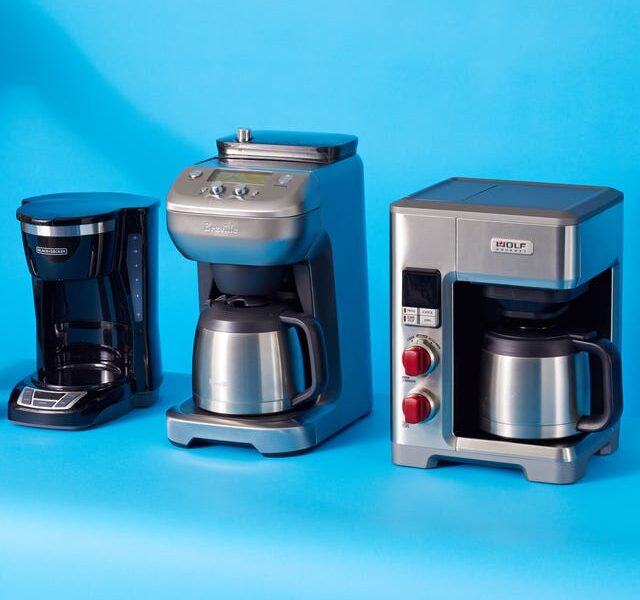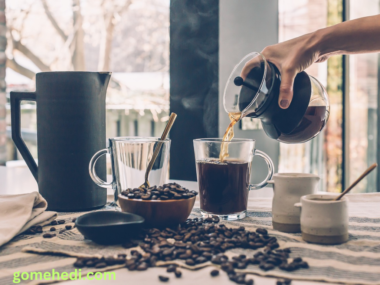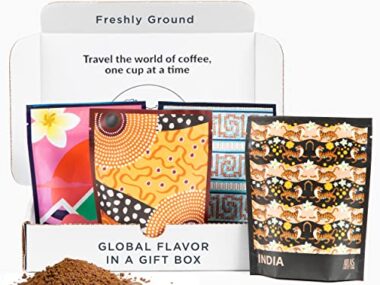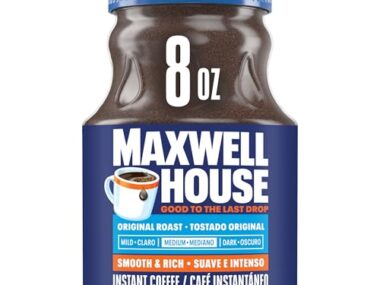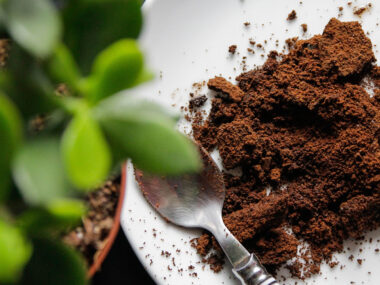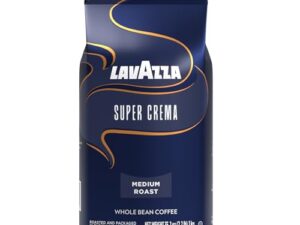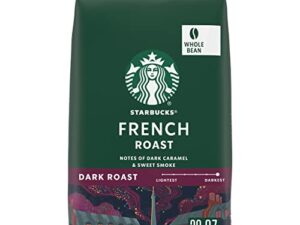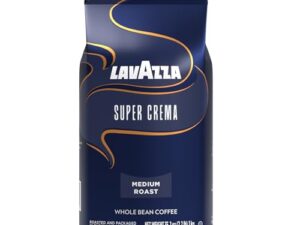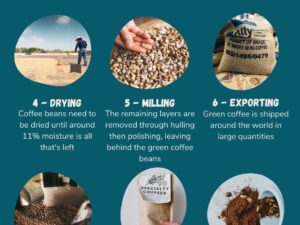Coffee lovers often wonder, “What is the best coffee?” The answer depends on personal taste and preferences.
Coffee is more than just a drink; it’s a daily ritual for many. From bold espresso to smooth lattes, the variety of coffee types can be overwhelming. Each type offers a unique flavor and experience. Some prefer the rich and intense taste of dark roast, while others enjoy the mild and smooth notes of a light roast.
Then there are the brewing methods—each one bringing out different aspects of the coffee beans. Whether you’re a seasoned coffee connoisseur or a newbie, understanding these differences can help you find your perfect cup. Let’s explore what makes each coffee unique and discover which one might be the best for you.

Credit: www.tasteofhome.com
Types Of Coffee Beans
Coffee enthusiasts often seek the best coffee, but the answer can vary based on personal preference. Understanding the types of coffee beans available is a great start to discovering your favorite brew. Different beans have unique flavors, aromas, and characteristics that can make your coffee experience richer and more enjoyable.
Arabica Vs. Robusta
Two of the most popular coffee beans are Arabica and Robusta. These beans dominate the coffee market and have distinct differences.
Arabica beans are known for their smooth, mild flavor. They often have a hint of sweetness, with notes of fruit, sugar, and berries. Arabica beans are more delicate and grow best in higher altitudes. They are popular among coffee lovers for their rich, nuanced taste.
Robusta beans, on the other hand, have a stronger, more bitter flavor. They contain more caffeine than Arabica beans, which gives them a stronger kick. Robusta beans are hardier and can grow in lower altitudes and harsher climates. They are often used in espresso blends to provide a fuller body and a better crema.
|
Aspect |
Arabica |
Robusta |
|---|---|---|
|
Flavor |
Mild, sweet, fruity |
Strong, bitter, earthy |
|
Caffeine Content |
Lower |
Higher |
|
Growing Conditions |
High altitudes, delicate |
Low altitudes, hardy |
Liberica And Excelsa
While Arabica and Robusta are the most common, Liberica and Excelsa beans are also worth exploring.
Liberica beans have a unique and bold flavor profile. They offer a smoky, woody taste with floral and fruity notes. Liberica beans are larger and have an irregular shape. They are less common and are mainly grown in the Philippines and Malaysia. These beans are ideal for those who want to try something different and adventurous.
Excelsa beans are often considered a sub-variety of Liberica. They have a distinctive tart and fruity flavor with a hint of dark roast. Excelsa beans are used to add complexity to coffee blends. They grow primarily in Southeast Asia and are popular among those who enjoy diverse and complex coffee profiles.
|
Aspect |
Liberica |
Excelsa |
|---|---|---|
|
Flavor |
Smoky, woody, floral |
Tart, fruity, dark roast |
|
Shape |
Large, irregular |
Small, irregular |
|
Growing Regions |
Philippines, Malaysia |
Southeast Asia |
Brewing Methods
When it comes to finding the best coffee, the brewing method can make a huge difference. Each method brings out different flavors and textures, giving you a unique coffee experience. Let’s explore some popular brewing methods: French Press, Espresso, and Cold Brew.
French Press
The French Press is a classic and straightforward brewing method. It uses immersion to extract flavors from the coffee grounds. Here’s why many people love it:
-
Rich and full-bodied flavor: The French Press retains the natural oils of the coffee, resulting in a robust taste.
-
Simple to use: You just need hot water and coarsely ground coffee.
-
Affordable: No need for expensive machines.
To brew coffee with a French Press, follow these steps:
-
Boil water and let it cool for 30 seconds.
-
Add coarsely ground coffee to the French Press.
-
Pour hot water over the coffee grounds.
-
Stir gently and let it steep for 4 minutes.
-
Press the plunger down slowly and serve.
Here’s a quick comparison table:
|
Pros |
Cons |
|---|---|
|
Rich flavor |
Sediment in coffee |
|
Easy to use |
Needs coarse grind |
|
Affordable |
Time-consuming |
Espresso
Espresso is known for its strong and concentrated flavor. It’s the base for many popular coffee drinks like cappuccinos and lattes. Here are some key points:
-
Intense flavor: Espresso has a bold taste and creamy texture.
-
Versatile: You can use it to make various coffee beverages.
-
Quick to brew: It takes less than a minute.
To make espresso, you need an espresso machine. Here’s a simple guide:
-
Fill the machine’s portafilter with finely ground coffee.
-
Tamp the coffee down firmly.
-
Lock the portafilter in the machine.
-
Start the machine and let the espresso brew for about 25-30 seconds.
-
Serve immediately.
Below is a pros and cons table:
|
Pros |
Cons |
|---|---|
|
Strong flavor |
Expensive equipment |
|
Quick brew time |
Requires practice |
|
Versatile |
Needs fine grind |
Cold Brew
Cold Brew coffee is perfect for those who prefer a smooth and refreshing drink. It’s made by steeping coffee grounds in cold water for an extended period. Here’s why it stands out:
-
Smooth flavor: Cold Brew is less acidic and has a mellow taste.
-
Long shelf life: It can be stored in the fridge for up to two weeks.
-
Easy to make in large batches: Perfect for busy mornings.
Here’s how to make Cold Brew coffee:
-
Combine coarsely ground coffee and cold water in a jar.
-
Stir gently to ensure all grounds are wet.
-
Cover and let it steep in the fridge for 12-24 hours.
-
Strain the coffee using a fine mesh sieve or cheesecloth.
-
Serve over ice or dilute with water or milk.
Here is a quick comparison:
|
Pros |
Cons |
|---|---|
|
Smooth taste |
Takes time to brew |
|
Less acidic |
Needs coarse grind |
|
Long shelf life |
Requires straining |
Flavor Profiles
When searching for the best coffee, understanding flavor profiles is key. Different coffees offer unique tastes based on their origin, processing, and brewing methods. Let’s dive into the distinct flavor profiles that can elevate your coffee experience.
Fruity Notes
Coffees with fruity notes often come from African regions like Ethiopia and Kenya. These beans are known for their bright, vibrant flavors. Fruity notes can range from citrus to berry. Here are some common fruity flavors you might encounter:
-
Citrus: Think of lemon, lime, and orange. These flavors add a tangy, refreshing quality to the coffee.
-
Berry: Blueberry, raspberry, and strawberry notes can make the coffee taste sweet and juicy.
-
Stone Fruit: Flavors like peach, apricot, and cherry add a smooth, mellow sweetness.
Fruity coffees often have a higher acidity, which enhances their bright and lively taste. These coffees are perfect for those who enjoy a refreshing and light cup. Below is a table highlighting some popular fruity coffee varieties:
|
Region |
Common Fruity Notes |
|---|---|
|
Ethiopia |
Blueberry, Citrus |
|
Kenya |
Blackcurrant, Grapefruit |
|
Yemen |
Cherry, Raisin |
Chocolate Undertones
Coffees with chocolate undertones are rich and decadent. These flavors are often found in beans from Latin America, particularly from countries like Brazil and Colombia. Chocolatey coffees can vary from milk chocolate to dark chocolate. Here are some nuances:
-
Milk Chocolate: Smooth and creamy, with a sweet and mild flavor.
-
Dark Chocolate: Rich and intense, with a slight bitterness that adds depth.
-
Cocoa: A raw, earthy chocolate flavor that is both bold and complex.
Chocolate undertones give coffee a comforting and indulgent character. These coffees are great for those who love a rich, full-bodied cup. Here’s a table with some popular chocolatey coffee varieties:
|
Region |
Common Chocolate Notes |
|---|---|
|
Brazil |
Milk Chocolate, Nutty |
|
Colombia |
Dark Chocolate, Caramel |
|
Mexico |
Cocoa, Spicy |
Nutty Flavors
Coffees with nutty flavors offer a warm and toasty taste. These flavors are often found in beans from Central America and Southeast Asia. Nutty flavors can range from almond to hazelnut. Here are some common nutty flavors:
-
Almond: Light and sweet, with a subtle and creamy taste.
-
Hazelnut: Rich and buttery, with a slightly sweet and nutty flavor.
-
Peanut: Earthy and robust, with a strong and distinct nutty character.
Nutty coffees have a smooth and mellow profile, making them perfect for a relaxing cup. Here’s a table with some popular nutty coffee varieties:
|
Region |
Common Nutty Notes |
|---|---|
|
Guatemala |
Almond, Chocolate |
|
Sumatra |
Hazelnut, Earthy |
|
Costa Rica |
Peanut, Citrus |
Credit: www.reddit.com
Coffee Roasting Levels
When exploring the best coffee, understanding coffee roasting levels is essential. Roasting transforms green coffee beans into the aromatic, flavorful beans used to brew coffee. The roast level significantly influences the taste, aroma, and caffeine content of your coffee. Let’s dive into the different roasting levels: Light Roast, Medium Roast, and Dark Roast.
Light Roast
Light roast coffee is known for its bright, acidic flavors. The beans are roasted for a shorter time, preserving their natural characteristics.
Key characteristics of light roast coffee include:
-
Flavor: Fruity, floral, and vibrant.
-
Color: Light brown with no oil on the surface.
-
Aroma: Fresh and citrusy.
-
Caffeine Content: Higher than darker roasts due to less heat exposure.
Light roast coffee retains much of the original bean flavor. It’s favored by those who enjoy complex and nuanced flavors.
|
Aspect |
Description |
|---|---|
|
Flavor Profile |
Fruity, floral, citrusy |
|
Roast Duration |
Shortest |
|
Bean Color |
Light brown |
|
Surface Oil |
None |
Medium Roast
Medium roast coffee offers a balance between acidity and body. The beans are roasted longer than light roasts but shorter than dark roasts.
Key characteristics of medium roast coffee include:
-
Flavor: Balanced, rich, with notes of caramel and chocolate.
-
Color: Medium brown with a slightly oily surface.
-
Aroma: Sweet and toasty.
-
Caffeine Content: Moderate, balanced between light and dark roasts.
Medium roast coffee is versatile and appeals to a broad range of coffee drinkers. It’s often used in drip coffee and is a popular choice for its well-rounded flavor.
|
Aspect |
Description |
|---|---|
|
Flavor Profile |
Caramel, chocolate, balanced |
|
Roast Duration |
Intermediate |
|
Bean Color |
Medium brown |
|
Surface Oil |
Slight |
Dark Roast
Dark roast coffee is bold and robust. The beans are roasted for the longest time, resulting in a dark color and oily surface.
Key characteristics of dark roast coffee include:
-
Flavor: Deep, smoky, and sometimes bitter.
-
Color: Dark brown to almost black with an oily surface.
-
Aroma: Intense and rich.
-
Caffeine Content: Lower than lighter roasts due to longer roasting time.
Dark roast coffee is ideal for those who prefer a strong, intense flavor. It’s commonly used in espresso and French press brewing methods.
|
Aspect |
Description |
|---|---|
|
Flavor Profile |
Smoky, bold, intense |
|
Roast Duration |
Longest |
|
Bean Color |
Dark brown to black |
|
Surface Oil |
Oily |
Single Origin Vs. Blends
Coffee lovers often debate about what type of coffee is the best. The discussion usually narrows down to two main categories: Single Origin and Blends. Each type has its own unique qualities and can offer different experiences for your taste buds. Knowing the differences can help you choose the best coffee for your preferences.
Benefits Of Single Origin
Single Origin coffee is sourced from one specific location. This could be a single farm, region, or country. This type of coffee is known for its unique flavor profile, which is influenced by the specific soil, climate, and altitude of its origin.
Here are some key benefits of Single Origin coffee:
-
Distinct Flavors: Each Single Origin coffee has a unique taste. You can experience flavors that range from fruity to nutty, depending on where the coffee is grown.
-
Transparency: You know exactly where your coffee comes from. This can be important for those who value ethical sourcing.
-
Quality: Single Origin coffees are often high quality. Farmers and producers focus on their specific region, ensuring the best growing practices.
Single Origin coffee is often more expensive due to its quality and transparency. But, for many, the unique flavors and ethical considerations make it worth the cost.
Unique Characteristics Of Blends
Blends combine coffee beans from different locations. This mixing process aims to create a balanced and consistent flavor. Blends are popular because they offer a stable taste that coffee drinkers can rely on.
Here are some unique characteristics of coffee blends:
-
Balance: Blends are crafted to balance different flavor profiles. This creates a smooth and harmonious taste.
-
Consistency: Since blends combine beans from various sources, they offer a consistent flavor throughout the year.
-
Versatility: Blends are great for different brewing methods. Whether you use a French press, drip coffee maker, or espresso machine, blends can adapt well.
While blends may lack the distinctiveness of Single Origin coffee, they make up for it in balance and reliability. Many popular coffee brands use blends to ensure their customers get the same great taste every time.
Sustainability In Coffee
Many coffee lovers search for the perfect cup. But the best coffee is not just about taste. Sustainability in Coffee is crucial. It ensures that coffee is grown and harvested in ways that benefit people and the planet. Let’s explore two key aspects of sustainability in coffee: Fair Trade Practices and Organic Coffee.
Fair Trade Practices
Fair trade practices aim to provide better conditions for coffee farmers. These practices ensure fair prices, better working conditions, and sustainable farming. Here are some important points about fair trade practices:
-
Fair Prices: Farmers receive a minimum price for their coffee. This helps them cover production costs and support their families.
-
Community Development: Part of the fair trade premium goes to community projects. These projects include building schools, healthcare facilities, and improving infrastructure.
-
Environmental Protection: Fair trade farms often use eco-friendly practices. These methods protect the environment and promote biodiversity.
Fair trade practices also empower farmers. They have a voice in decision-making and access to training. This leads to better quality coffee and stronger communities.
|
Benefits |
Description |
|---|---|
|
Fair Prices |
Farmers receive a stable income. |
|
Community Projects |
Investments in education, health, and infrastructure. |
|
Environmental Care |
Use of sustainable farming practices. |
Organic Coffee
Organic coffee is grown without synthetic chemicals. This means no pesticides, herbicides, or fertilizers. Organic farming promotes healthier soil and cleaner water. Here are some benefits of organic coffee:
-
Healthier Soil: Organic methods improve soil health. This leads to better crops and less erosion.
-
No Harmful Chemicals: Organic coffee is free from harmful chemicals. This is better for the environment and the farmers’ health.
-
Better Taste: Many people believe organic coffee tastes better. This is because it is grown in natural conditions.
Organic certification is important. It ensures that coffee meets strict standards. These standards cover everything from growing to processing. Look for labels such as USDA Organic or Fair Trade Certified.
|
Aspect |
Benefit |
|---|---|
|
Healthier Soil |
Improves crop quality and reduces erosion. |
|
No Chemicals |
Safer for the environment and farmers. |
|
Better Taste |
Grown in natural conditions, enhancing flavor. |
Choosing organic coffee supports sustainable farming. It also ensures you are drinking a cleaner, healthier product.
Popular Coffee Brands
Everyone loves a good cup of coffee. But with so many choices, how do you find the best one? Understanding the popular coffee brands can help. From local roasters to global brands, each offers unique flavors and experiences. Let’s dive into some of the top choices available.
Local Roasters
Local roasters often create unique, high-quality coffee. They source beans directly from farmers, ensuring freshness and quality. Here are some benefits and examples:
-
Freshness: Local roasters roast beans in small batches. This ensures fresh and flavorful coffee.
-
Support Local Economy: Buying from local roasters helps small businesses.
-
Unique Flavors: Local roasters often experiment with different blends and roasting techniques.
Here are a few popular local roasters:
|
Roaster |
Location |
Specialty |
|---|---|---|
|
Blue Bottle Coffee |
California, USA |
Single-origin beans |
|
Stumptown Coffee Roasters |
Oregon, USA |
Cold brew coffee |
|
Square Mile Coffee Roasters |
London, UK |
Espresso blends |
Each of these roasters has its own story and unique offerings. Trying coffee from local roasters can be a journey full of delightful surprises.
Global Brands
Global coffee brands are known for consistency and availability. These brands have a strong presence worldwide and offer a variety of products. Here are some well-known global brands:
-
Starbucks: Known for its wide range of coffee drinks and global reach.
-
Nespresso: Famous for its coffee pods and machines.
-
Lavazza: An Italian brand celebrated for its espresso.
Global brands offer several advantages:
-
Consistency: You get the same taste everywhere.
-
Variety: These brands offer many flavors and types of coffee.
-
Convenience: Easy to find in stores and online.
Here is a comparison of some global brands:
|
Brand |
Specialty |
Availability |
|---|---|---|
|
Starbucks |
Wide range of coffee drinks |
Global |
|
Nespresso |
Coffee pods |
Global |
|
Lavazza |
Espresso |
Global |
Global brands offer reliability and variety, making it easy to find a favorite. Whether you prefer a classic espresso or a unique blend, there’s something for everyone.
Coffee Culture Around The World
What is the best coffee? This question has many answers, as coffee culture varies greatly around the world. Each country has its own unique way of preparing and enjoying this beloved beverage. From strong Italian espressos to creamy Vietnamese egg coffee, the global coffee scene is diverse and fascinating.
Italian Espresso Culture
In Italy, coffee is more than just a drink. It’s a way of life. The Italian espresso is famous for its strong flavor and rich aroma. Italians usually drink espresso in small, quick shots at the bar. They often enjoy it standing up, chatting with friends or reading the newspaper.
Some key points about Italian espresso culture include:
-
Quick consumption: Italians drink espresso quickly, usually in one or two sips.
-
High quality: The coffee beans are carefully selected and roasted to perfection.
-
Social aspect: Espresso is often enjoyed with friends or colleagues.
Here is a simple table to understand the typical day of an Italian coffee lover:
|
Time |
Drink |
|---|---|
|
Morning |
Cappuccino |
|
Mid-morning |
Espresso |
|
Afternoon |
Macchiato |
|
Evening |
Espresso |
Italians believe in preserving the authenticity of their coffee. They avoid adding too many flavors or ingredients. Simple and pure, that’s the Italian way.
Vietnamese Egg Coffee
Vietnamese egg coffee is a unique and delicious treat. It combines the bold flavor of Vietnamese coffee with a creamy, sweet egg mixture. This drink was invented in Hanoi in the 1940s. It was created as a response to a shortage of milk.
Some unique features of Vietnamese egg coffee include:
-
Rich and creamy: The egg mixture gives the coffee a thick, creamy texture.
-
Sweet flavor: The addition of sugar and condensed milk adds a sweet touch.
-
Unique preparation: The egg yolk is whipped with sugar and condensed milk before being added to the coffee.
Here is a simple table to understand the ingredients of Vietnamese egg coffee:
|
Ingredient |
Quantity |
|---|---|
|
Vietnamese coffee |
1 cup |
|
Egg yolk |
1 |
|
Condensed milk |
2 tablespoons |
|
Sugar |
1 tablespoon |
Vietnamese egg coffee is often enjoyed as a special treat. It is usually served hot, but can also be enjoyed cold. This drink is a must-try for coffee lovers visiting Vietnam.
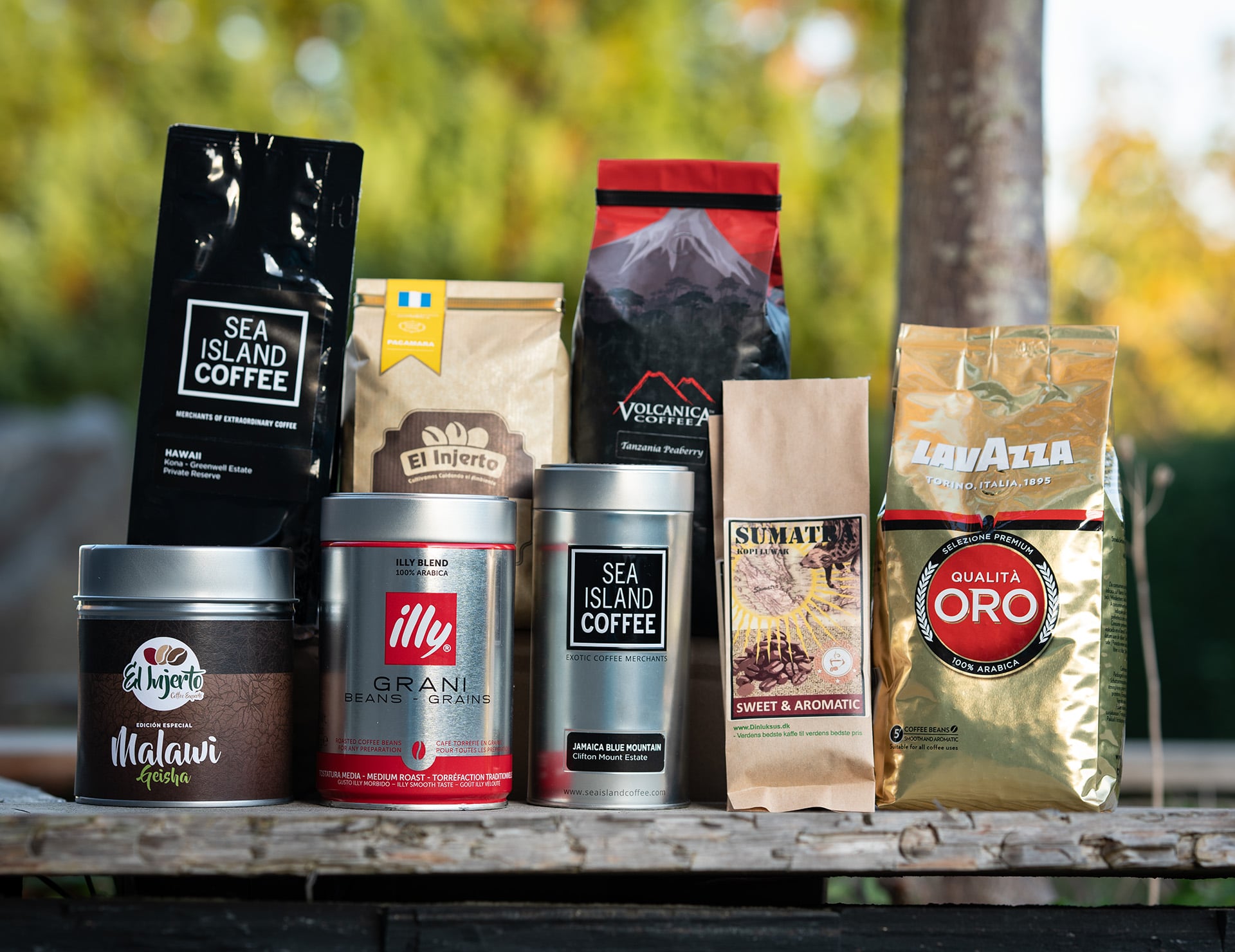
Credit: www.suitelife.blog
Frequently Asked Questions
What Type Of Coffee Is Considered The Best?
Specialty coffee is often considered the best. It is made from high-quality Arabica beans, carefully sourced and roasted.
What Is The Top 1 Coffee In The World?
The top coffee in the world is often considered to be Kopi Luwak. This Indonesian coffee is unique and highly sought after. It is made using beans eaten and excreted by civet cats.
What Is The Best Coffee In The Market?
The best coffee varies by personal preference. Popular options include Blue Bottle, Stumptown, and Lavazza. Try different brands to find your favorite.
Which Coffee Taste Is Best?
The best coffee taste varies by preference. Many enjoy rich, bold flavors like espresso. Others prefer smooth, balanced blends.
Conclusion
Choosing the best coffee depends on your taste preferences. Experiment with different beans. Try various brewing methods. Notice how each type tastes. Pay attention to what you enjoy most. Coffee is a personal experience. What works for one person might not suit another.
Enjoy the journey of finding your perfect cup. Remember, the best coffee is the one that makes you happy. So, savor each sip and explore new flavors. Happy brewing!
